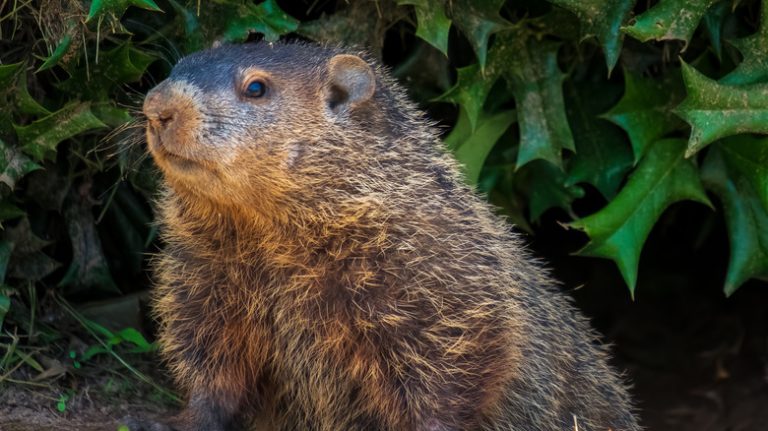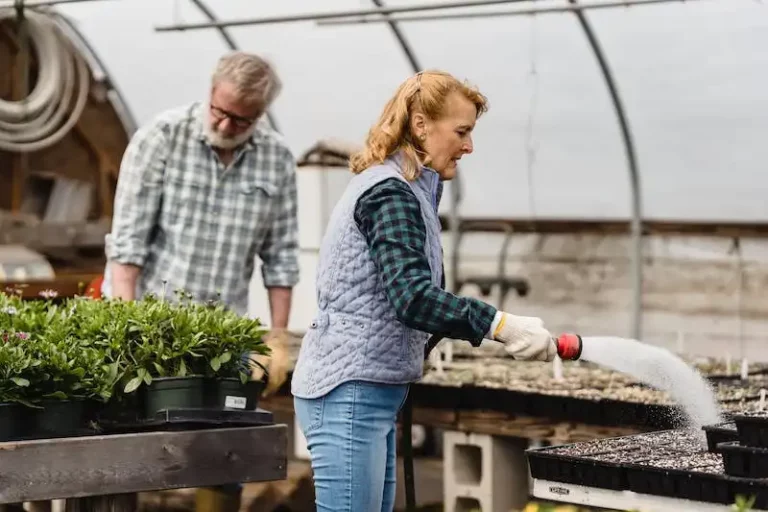If you’re a gardener who loves the beauty of wildflowers and wants to create a dreamy, wildlife-friendly space in your yard, planting a wildflower meadow may be the perfect option. Not only can wildflowers add stunning aesthetics to your garden, but they also provide a habitat for butterflies and other beneficial wildlife. In this article, we’ll give you seven essential tips to consider before starting your wildflower meadow project.
1. Consider your climate and location: Before you start growing wildflowers, it’s important to understand your local weather and soil conditions. Some wildflower species may only thrive in certain climates, so it’s crucial to choose plants that will thrive in your specific area.
2. Prepare the soil: Wildflowers need well-draining soil to grow successfully. Before planting, you’ll need to remove any weeds, grasses, or other unwanted plants that may compete with your wildflowers for nutrients and water. You can opt for manual removal or use plastic mulch to smother the weeds.
3. Choose the right seeds: There’s a wide variety of wildflower seeds available, so it’s essential to choose ones that are suitable for your region and the type of meadow you want to create. Consider factors like the height, bloom time, and drought tolerance of the plants when making your selections.
4. Start small: If you’re new to growing wildflowers, it’s better to start with a small area first. This way, you can learn how to care for and maintain your meadow effectively. As you gain more experience and confidence, you can expand your meadow gradually.
5. Be patient: Wildflowers take time to establish and bloom. It may take a year or two before your meadow is in full bloom, so be prepared to wait and enjoy the progress along the way. During this time, you’ll need to ensure proper watering and tending to ensure the viability of your plants.
6. Consider self-sowing plants: Some wildflowers have the ability to self-sow, meaning they drop their seeds and produce new plants without much effort from the gardener. These self-sowing plants can make maintenance easier and keep your meadow looking beautiful year after year.
7. Keep it updated: Wildflower meadows require regular maintenance to stay healthy and attractive. This includes weeding, removing any invasive plants, and keeping an eye on the moisture levels in the soil. By tending to your meadow regularly, you can ensure its longevity and prevent it from becoming overgrown.
By considering these seven tips before planting a wildflower meadow, you’ll be well-prepared to create a stunning and beneficial addition to your garden. Whether you opt for a small, secluded corner or a large, open meadow, growing wildflowers can bring beauty and wildlife to your outdoor space.
A Wildflower Garden In Your Backyard
Creating a wildflower garden in your backyard can be a pretty and rewarding project. Not only will it add beauty to your outdoor space, but it can also provide a habitat for pollinators and other wildlife. However, there are a few things to consider before getting started.
First, you’ll want to check whether your backyard gets enough sunlight. Most wildflowers need at least 6 hours of direct sun each day to thrive. If your yard is mostly shaded, wildflowers may not be the best option for you.
Another important factor to consider is watering needs. While wildflowers are generally low-maintenance, they do require regular watering, especially during dry spells. If you’re not willing to keep up with the watering, you may want to consider other landscaping options.
When it comes to planting wildflowers, you have a few choices. You can seed the area yourself, although this requires patience and a bit of work to keep the area free of weeds until the plants become established. Another option is to purchase pre-mixed seed blends or established plants. This can be a better option for those who want quicker results or have less time to tend to the garden.
Native wildflowers are always a good choice, as they are adapted to the local climate and require less maintenance. They also provide important food and habitat for local pollinators. If you do decide to plant non-native species, be sure to check if they are invasive in your area before planting.
Designing your wildflower garden is another important consideration. You can choose to go for a more natural look by scattering the seed evenly over the desired area and letting the flowers grow where they please. Alternatively, you can create a more structured garden by planting in rows or clusters.
One important step that is often overlooked is preparing the soil before planting. Remove any existing vegetation and weeds, loosen the soil with a garden fork, and add compost or organic matter to improve drainage and fertility. You can also add a thin layer of mulch after planting to help retain moisture and suppress weeds.
When it comes time to care for your wildflower garden, it’s important not to over-tend to the plants. Wildflowers can generally take care of themselves and don’t require much fertilizing or additional care. However, you may need to do some periodic weeding to keep the area looking tidy, especially in the early spring.
In conclusion, creating a wildflower garden in your backyard can be a rewarding and beautiful addition to your outdoor space. Whether you choose to seed the area yourself or purchase established plants, be sure to consider the sunlight, watering needs, and maintenance requirements of the wildflowers you choose. With a little patience and care, you can create a thriving habitat for pollinators and enjoy the natural beauty of wildflowers in your own backyard.
Creating Wildflower Gardens
Creating a wildflower garden can be an exciting and rewarding project for nature-loving gardeners. Whether you have a small backyard or acres of land to work with, designing a wildflower garden can help attract pollinators like bees, butterflies, and hummingbirds while adding a splash of color to your outdoor space. Here are some tips to get you started:
1. Know your needs: Before getting started, assess your gardening needs and desires. Consider the amount of sunlight your garden receives each day, as this will affect the types of wildflowers that will thrive. Also, determine whether you want a meadow-like garden or a more structured design.
2. Select your plants: Choose a variety of wildflower species that are native to your region and suit your garden’s conditions. Native plants are well-adapted to the local climate and often require less maintenance than non-native species.
3. Prepare the soil: Make sure your soil is well-drained and fertile. You may need to remove any existing grass or weeds before planting. Solarization can be an effective method for killing off unwanted plants by covering the soil with plastic and allowing it to bake in the sun.
4. Start seeding: If you’re starting from scratch, you can either plant wildflower seeds directly into the ground or start them indoors and transplant them later. When sowing seeds, sprinkle them evenly over the prepared soil and gently work them into the top layer with a rake or your hands.
5. Watering and maintaining: While established wildflower meadows are drought-tolerant, newly planted seeds will need regular watering to ensure germination and establishment. Be sure not to overwater, though, as wet conditions can encourage weed growth.
6. Mulch and weed control: Mulching can help retain moisture and suppress weed growth in your wildflower garden. Organic mulches, such as wood chips or straw, can be applied around the base of the plants to help keep the soil cool and moist. Regular weeding is important to ensure your wildflowers aren’t competing with invasive grasses and weeds.
7. Enjoy the results: Be patient and enjoy the process of watching your wildflower garden grow and evolve over time. Keep a journal to track the progress and any changes you’d like to make in future years.
Creating a wildflower garden can be a highly rewarding and beneficial endeavor. It brings the ease of nature into the backyard and provides an updated showy cover to a dry and “ugly” spot. Furthermore, with patience, you can even renovate a bare patch of land into a natural oasis that lures and benefits beneficial species.
If you need any assistance or have any questions, don’t hesitate to contact Mary Vlasova, a well-known radio talk show host who specializes in creating and maintaining wildflower meadows.
How to Start a Wildflower Garden in Your Backyard
Creating a vibrant and colorful wildflower garden in your backyard can be a fantastic way to attract pollinators, support local wildlife, and add natural beauty to your outdoor space. If you’re considering starting a wildflower garden, here are some things to keep in mind:
| To Mow or Not to Mow | Before getting started, decide whether you want to have a mowed pathway in your wildflower garden or if you’d rather opt for a meadow-like look with taller plants. |
| Viability of Your Chosen Area | Consider whether the area you’ve chosen for your wildflower garden receives enough sunlight, has good soil drainage, and is free from invasive plant species. |
| What Type of Wildflower Garden | There are different types of wildflower gardens to choose from, such as annuals, perennials, or a mix of both. Decide which option suits your preferences and the amount of work you’re willing to put in. |
| Getting Started | To get started, you can either sprinkle wildflower seeds over bare soil or plant wildflower plugs. Plugs ensure better contact with the soil and can result in a more even and successful growth. |
| Caring for Your Wildflower Garden | Maintaining your wildflower garden is relatively easy. You can water the area during dry spells, remove any invasive plants, and gently feed the wildflowers without disturbing their natural needs. |
| Beneficial Plants | Include beneficial plants in your wildflower garden to attract pollinators and support the local ecosystem. Research which plants are best suited for your area. |
| The Wonders of Self-Sowing | If you choose self-sowing wildflowers, keep in mind that they will spread and fill in gaps over time. This can create a fuller and more natural-looking garden. |
| Recording Necessary Information | Keeping a garden journal is a great way to track the progress of your wildflower garden, record the species you’ve planted, and note any changes or adjustments you make along the way. |
Starting a wildflower garden in your backyard is a rewarding and environmentally friendly endeavor. With careful planning, proper maintenance, and the right selection of plants, you can create a beautiful and thriving natural habitat right outside your door.




